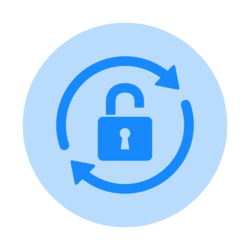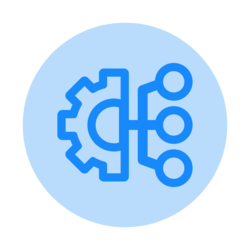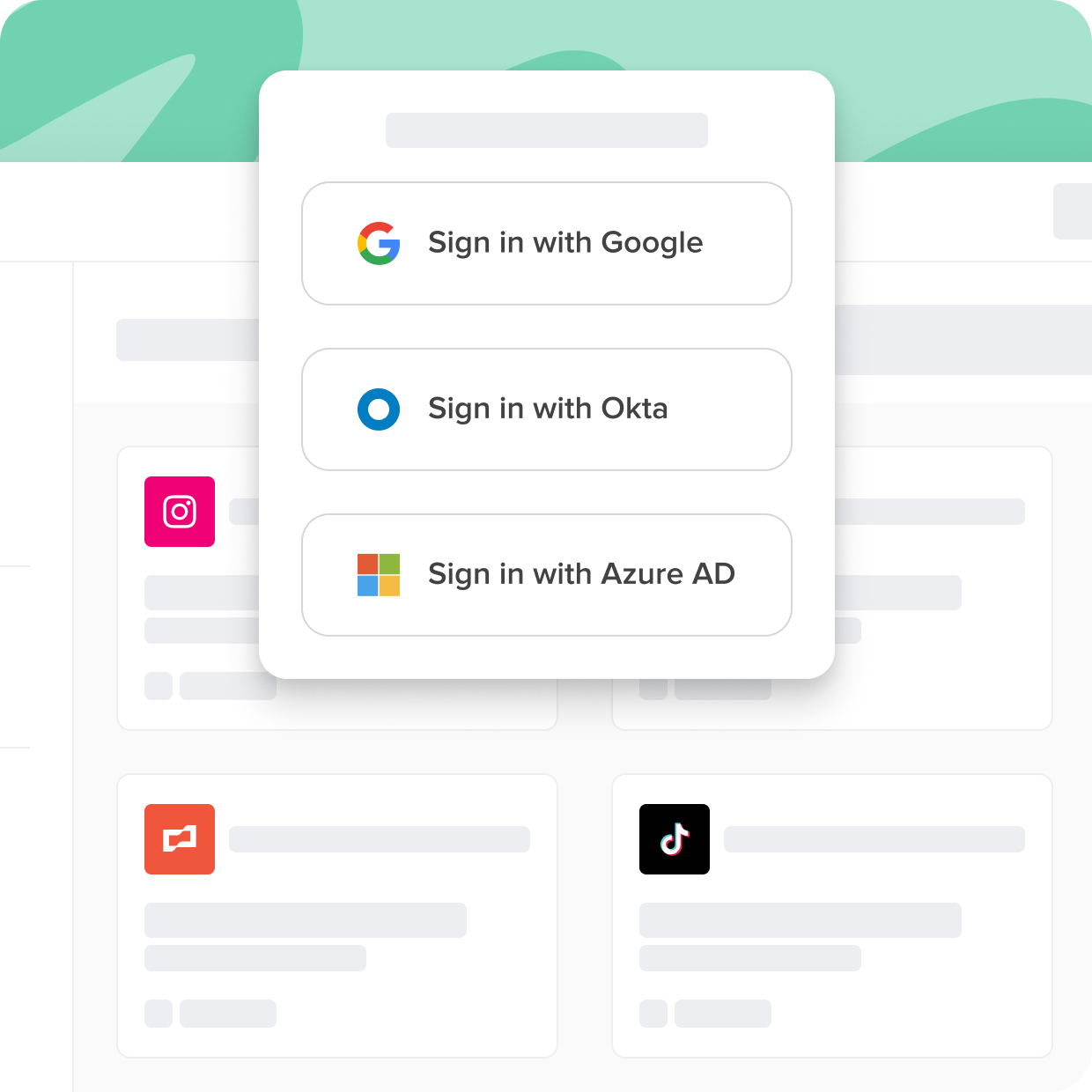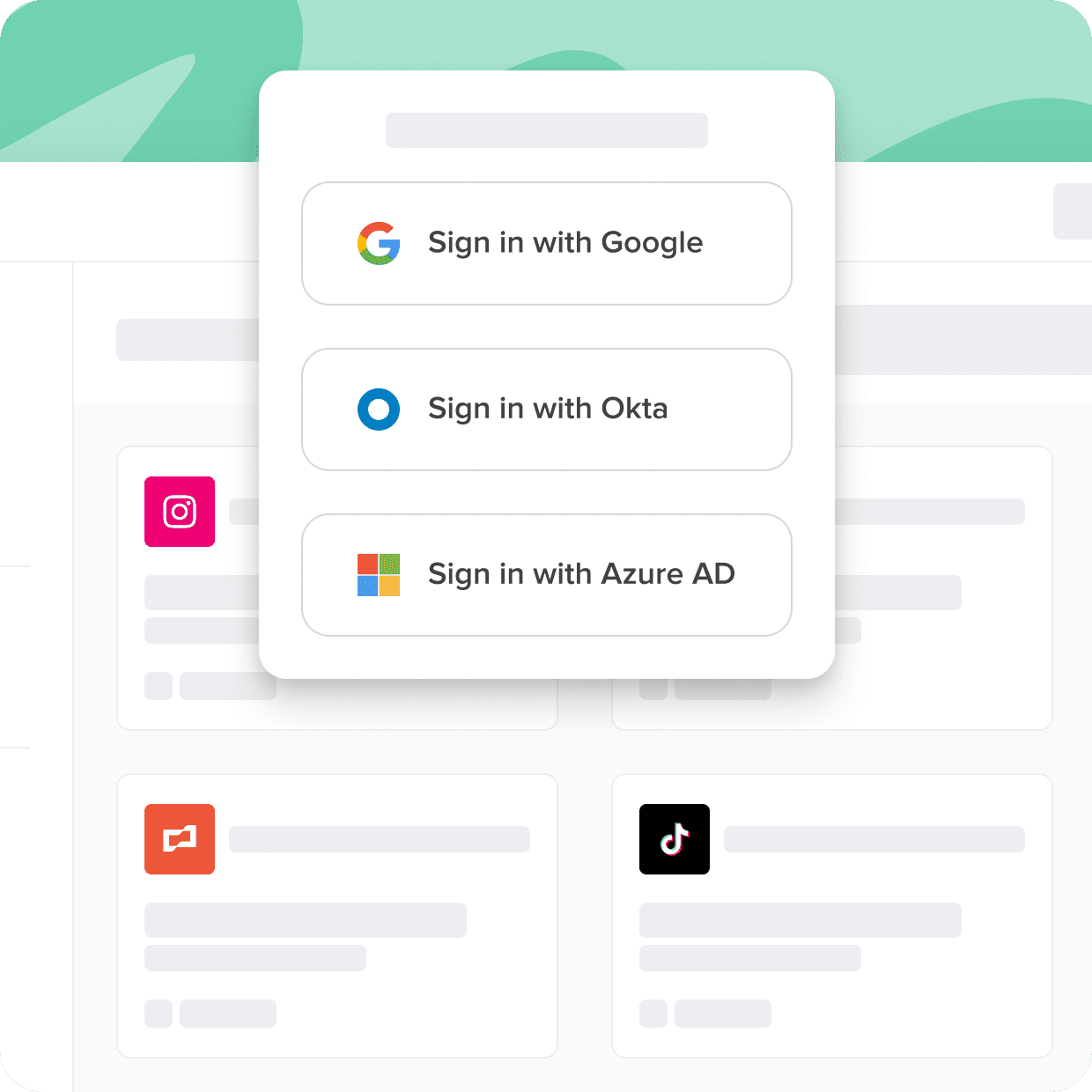Identity and access management (IAM) is a security paradigm that requires all access attempts, even those from within a network, to be continuously verified and authenticated. With the integration of SSO, you can enhance your security and control over user access to various applications and resources. Unfortunately, many corporate applications don't support the SSO standard and can't reap all the benefits. The applications that fall into this category are best called "nonfederated." Nonfederated applications are a new category that is becoming increasingly challenging for businesses to manage and secure effectively, yet increasingly critical for businesses to succeed.
Cerby connects all of your apps to your SSO tools, even if they don't support the SSO standard. In this guide, you'll learn about SSO software, the history, and the benefits.
Streamline Access With Single Sign-On
Not all apps are created equal. Some come with security gaps and complexities that can hinder user adoption and put sensitive data at risk. With Cerby, you can ensure secure and seamless access to all your applications, regardless of their support for standards like SSO.
With Cerby You Can

Close the identity gap

Universally enforce 2FA

Eliminate the SSO tax
Cybersecurity Identity And Access Management
In today's digital age, organizations face ever-evolving security threats, with cyber-attacks becoming more sophisticated and complex. Identity and Access Management (IAM) serves as an essential tool in cybersecurity, used to help protect organizations against security threats by controlling access to information systems and data. So, what is IAM?
IAM is a process that aims to ensure secure, appropriate access to organizational resources while restricting access to unauthorized users. It involves technology, policies, and procedures that govern the management of access to systems and data, from login credentials to access privileges and permissions and identity management. With IAM, organizations can create, modify, and remove user identities and access privileges based on their levels of authority within the organization. This helps to protect sensitive information from unauthorized access by cybercriminals.
An IAM system is a unique framework of policies, processes, and technological tools that enables business organizations to manage user access to their most crucial systems and data more effectively. However, the challenge is that many applications don’t support the security standards to work with SSO—namely, the security assertion markup language (SAML). Nonfederated applications are a serious security risk, and research from the Ponemon Institute found that they make up a statistically significant percentage of breaches.
By implementing IAM solutions, organizations aim to mitigate the risk of cyber-attacks and protect sensitive data from being compromised. IAM helps organizations be proactive in their cybersecurity efforts and provides a layered security approach to secure their digital assets. Therefore, it can be crucial for organizations to implement IAM solutions to maintain control over their sensitive information systems and data. In a way, one answer to the question “What is identity and access management?” maybe “A vital component of a cybersecurity approach.”
Identity And Access Management In Cloud Computing
IAM is a vital component of cloud computing security and is responsible for managing access to cloud resources and protecting against unauthorized access. Several cloud service providers offer IAM solutions to their customers, including AWS IAM, Azure IAM, and Google IAM. Let's take a closer look at each of these solutions to understand their key features and benefits.
AWS IAM is a service offered by Amazon Web Services. It enables users to control access to AWS services and resources. This can be a useful IAM security tool. AWS IAM provides several features, including fine-grained access control, multi-factor authentication, and integration with AWS services. One key benefit of IAM in AWS is that it allows users to create and manage IAM policies, roles, and access keys, enabling them to customize access to their resources in the cloud. AWS IAM also provides a comprehensive audit trail, which can be used to monitor and troubleshoot access issues.
Azure IAM is an identity and access management service provided by Microsoft Azure. Azure IAM provides features such as role-based access control (RBAC), Azure AD, and multi-factor authentication. RBAC allows users to assign roles to resources, ensuring that individuals can only access the resources they need. Azure AD provides centralized identity management in the cloud and on-premise, integrating with various third-party applications. Additionally, Azure IAM offers a range of integration options, such as integration with Azure DevOps, Visual Studio, and PowerShell.
Google IAM provides identity and access management for the Google Cloud Platform (GCP). Google IAM offers features such as Google Cloud Identity, Cloud Identity-Aware Proxy (IAP), and OAuth 2.0. Google Cloud Identity allows users to manage their GCP identities and synchronizes with their on-premise identity solutions. Cloud IAP provides access control for users and resources, limiting access from untrusted networks. OAuth 2.0 provides authorization for several Google APIs and enables users to manage access to GCP services.
These services not only secure access to cloud resources but also help ensure compliance with industry and regulatory standards.
One key advantage of using IAM solutions is their flexibility. With IAM solutions, users can create custom roles and policies, ensuring that access is restricted to the necessary resources. IAM solutions can also be integrated with different services and applications, providing a single access point for multiple resources. IAM solutions support different use cases, including multi-cloud environments, hybrid infrastructures, and third-party applications. IAM solutions offer several benefits for cloud security. First, IAM solutions can help protect against data breaches by enforcing access control and restricting access to sensitive data.
- Second, IAM services can monitor usage patterns, detect suspicious activity, and alert administrators.
- Third, IAM solutions can ensure compliance with industry standards and regulatory requirements.
- Finally, IAM solutions can reduce the risk of insider threats by managing user access and ensuring that users have only the necessary permissions.
Identity And Access Management Tools
IAM is a highly important consideration in cybersecurity, and there are, fortunately, plenty of identity and access management tools that can help safeguard against security threats. As IAM in cloud security can be so important, here's a rundown of some important top 10 identity and access management tools that professionals in the field may be aware of.
- Okta: As one of the most popular and widely used IAM tools, Okta offers single-sign-on, multi-factor authentication, and user provisioning across various cloud-based applications.
- Microsoft Active Directory: This IAM tool is widely used in Windows-based environments to manage user identities and permissions.
- Oracle Identity Manager: Oracle's IAM tool provides comprehensive audit and compliance tools, user provisioning, and role-based access control.
- Ping Identity: With a focus on API security, Ping Identity offers a hybrid IAM solution that works with cloud-based and on-premise applications.
- CyberArk Identity: This IAM tool specializes in Privileged Access Management (PAM) solutions, where it manages and logs access to privileged accounts.
- SailPoint IdentityIQ: SailPoint's IAM tool provides centralized access governance across all types of applications and data stores.
- IBM Security Identity Manager: IBM's IAM tool supports numerous pre-built connectors for different platforms and facilitates user and role management automation.
- Auth0: Auth0 uses multi-factor authentication to verify users' identities and provides centralized management of access controls.
- ForgeRock: ForgeRock offers a comprehensive suite of authentication and access management solutions.
- OpenIAM: A popular open-source IAM tool, OpenIAM provides web-based access management, identity federation, and user provisioning.
IAM tools are essential for organizations to manage secure access to resources. Identity and access management tools, open source or proprietary, can provide organizations with a range of options that can be adapted to their specific requirements. IAM professionals should be aware of the popular IAM tools in the market, and the relevant certifications that validate their skills and knowledge in the field.
IAM architecture
IAM is an integrated framework of policies, tools, and technologies that manage user access to enterprise systems and applications. The primary objective of IAM is to provide authorized users with seamless access while preventing unauthorized access.
- Components of IAM include identification, authentication, authorization, and audit.
- Identification is the first step in the IAM process, where a user provides credentials to access the system.
- Authentication is the second step that verifies the user's identity based on their provided credentials.
- Authorization is the third step that determines the level of access a user has based on their role in the organization.
- Lastly, Audit logs all access events to identify potential security threats or policy violations.
Implementing IAM best practices in organizations requires a well-defined IAM architecture and a well-planned deployment strategy. One of the best practices for implementing IAM includes creating a robust identity lifecycle process that ensures user identities are created, updated, and deleted correctly. Additionally, organizations must maintain an up-to-date inventory of data and resources to manage user access. Identity management tools such as AWS IAM security tool can help with managing user identities.
Another best practice is the implementation of RBAC, which is used to ensure that users are assigned permissions based on their role in the organization. RBAC simplifies access control management and reduces the risk of granting unnecessary access privileges to users. Additionally, IAM policies must be appropriately configured to ensure that users have access to specific resources based on their roles and responsibilities.
To ensure that organizations meet compliance requirements, it's essential to implement standards-based security protocols and guidelines as a part of the IAM framework. The IAM system should be updated and audited regularly to ensure that it meets regulatory compliance requirements. IAM is an important framework that helps organizations manage employee identities, maintain control over sensitive data, and ensure compliance with industry standards.
Identity And Access Management Jobs
IAM is highly important. It’s often essential to cybersecurity efforts and is responsible for managing the digital identities of users and ensuring secure access to information systems. It has emerged as a potentially lucrative career option, given the proliferating demand for skilled professionals in the field. IAM certification levels can be used to provide validation of an individual's skills and expertise in managing identities and access to digital resources.
There are numerous certifications available, although not all are directly related to IAM. Popular certifications include Certified Information Systems Security Professional (CISSP), Certified Information Systems Auditor (CISA), and Certified in Identity and Access Management (CIAM). While some may cover advanced IAM concepts, others may begin with basic IAM concepts and technologies like AWS IAM and Azure IAM certification. Advanced level certifications include knowledge of protocols and standards like OAuth, SAML, and OpenID Connect, and IAM products like Okta and Ping Identity. Expert-level IAM certifications may delve into advanced IAM concepts and complex IAM architectures.
IAM certifications can open several doors for identity and access management jobs. Job roles can vary from IAM Consultant to IAM Architect and IAM Manager. The salary structure for IAM professionals can be quite ideal due to the ever-growing demand for skilled professionals. IAM certifications are one of the keys to entering the Identity and access management jobs market. IAM jobs require a diverse skill set and expertise in line with the level of IAM certifications. Azure IAM certification, which may be considered a basic level, is an excellent starting point for beginners who want to make a career in the IAM field.

